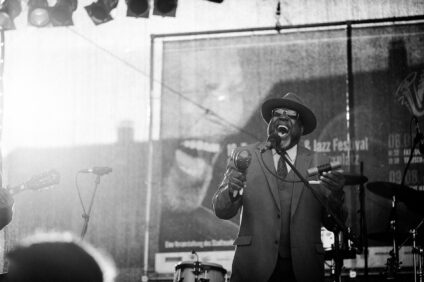Nuisance means any source of inconvenience or annoyance. Noise nuisance is the unwanted, disturbing or excessive sound that causes harm to the daily activity or ordinary comfort of human or animal life. Under the Environmental Management Act Chap. 35:05, no person shall make or cause to be emitted any noise greater in volume or intensity than the “prescribed standard” which means the maximum permissible sound pressure levels.
Students of the Hugh Wooding Law School Human Rights Law Clinic were each given the opportunity to write an article for the he “Law Made Simple” column in the Trinidad Guardian newspaper. These topics ranged from analysis of specific legislation, to general legal concepts. The aim of this exercise was to teach the students how to write about complex legal issues, for the average newspaper reader.
The articles were edited by the Clinic’s coordinator Mr. Jason Nathu, and will appear in the Trinidad Guardian over the next few months.
In this article, Orinthia Schmidt examines the issue of nuisance cause by noise:
What is the maximum permissible sound level?
Under the Act each zone has a different prescribed standard for noise which is allowed to be released into the environment.
In the Industrial Areas (Zone 1), the sound pressure level must not exceed a continuous sound pressure of 75 decibels or an instantaneous (unweighted peak) sound pressure of 130 decibels at anytime during the day or night.
In Environmentally Sensitive Areas (Zone 2), during the day time (8am to 8pm) the sound pressure level should not exceed 3 decibels above the background level, and the instantaneous sound pressure level should not exceed 120 decibels. In the night (8pm to 8am) the continuous sound pressure level should not exceed 3 decibels above the background level, and the instantaneous sound pressure should not exceed 115 decibels. Generally, the continuous sound pressure level in this area should not exceed 60 decibels.
In General Areas (Zone 3), in the day (8am to 8pm) the continuous sound pressure level should not exceed 5 decibels above the background level, and the instantaneous sound pressure should not exceed 120 decibels. In the night (8pm to 8am) the continuous sound pressure should not exceed 5 decibels above the background level, and the instantaneous sound pressure level should not exceed 115 decibels. Notwithstanding the above, the continuous sound pressure level should not exceed 80 decibels during the daytime and 65 decibels during the nighttime.
However, there are exceptions to these prescribed standards set out in the Noise Pollution Control Rules.
How is the standard measured?
To determine if someone is exceeding the standard, measurements must be taken using sound level meters to determine the sound pressure level (SPL). SPL is recorded in decibels (dB) and one can then compare the readings with the standards set in the Rules. These measurements must be taken by trained personnel at the boundary of the property where the sound is generated or at the boundary of the property of a person impacted by the sound.
Effects and Alternatives
Noise nuisance can have serious effects on babies, the elderly, at risk patients and pets. It can cause migraines, hearing loss, irritability and sleep deprivation.
Excessive noise is against the law and can amount to noise pollution/nuisance. However, if any person or organization intends to conduct or facilitate an event or activity which would involve using amplified sounds that may breach the prescribed noise standards, an application should be made to the Environmental Management Authority for a noise “variation”.
The responsibility is on the person affected negatively to contact the nearest police station for relief from noise nuisance.




